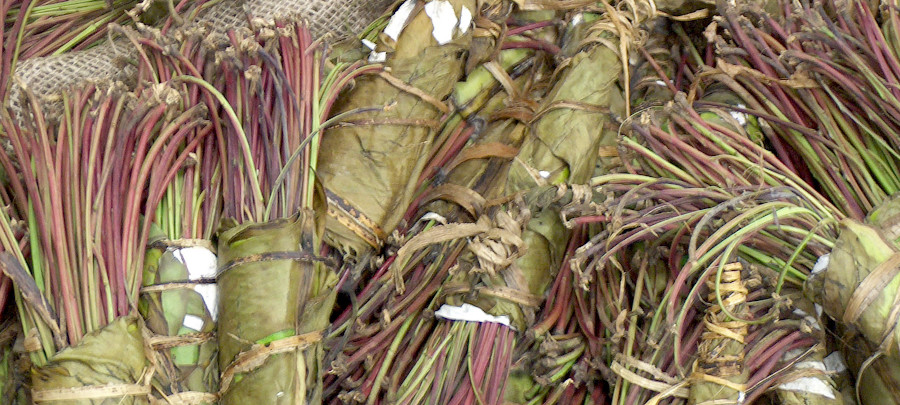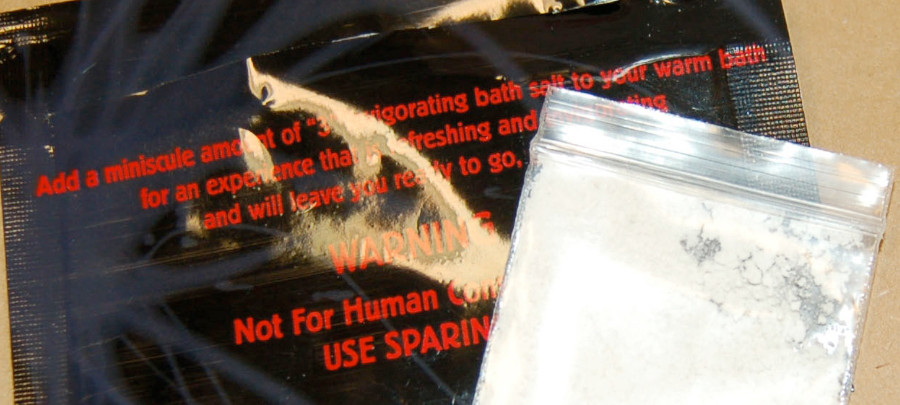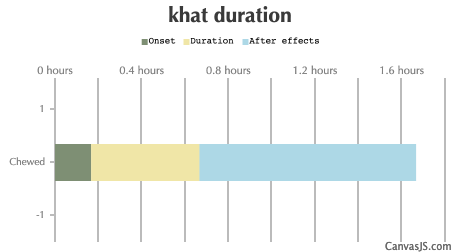[ Home ] [ Controlled Substances ] [ Stimulants ]
CATHINONE
|

Khat
 Cathinone:
Cathinone:
https://drugs.ncats.io/drug/540EI4406J
Khat (Catha edulis) is a flowering shrub native to East Africa and the Arabian Peninsula. The term khat refers to the leaves and young shoots of Catha edulis. The plant has been widely used since the thirteenth century as a recreational drug by the indigenous people of East Africa, the Arabian Peninsula, and the Middle East. Individuals chew khat leaves because of their stimulant and euphoric effects, which are similar to, but less intense than, those resulting from the abuse of cocaine or methamphetamine.


https://www.justice.gov/archive/ndic/pubs31/31482/31482p.pdf
Ever since ancient history, khat has been used in large areas in the Middle East and Africa. The oldest historical reference points to Alexander the Great sending khat to general Harrar as a cure for his melancholy. In the year 1237 the effects of khat were mentioned for the first time in literature in "The Book of Compound Drugs", written by the Arabian physician Naguib Ad Din. The author proposed that khat would be used in the treatment of melancholy and depression and also as mood enhancer at social gatherings. Other authors from the same period noted khat was effective also to inhibit feelings of hunger and fatigue. Long ago, Moslems used khat instead of alcohol. Khat was used by participants in religious ceremonies as a way of staying awake during long nightly prayer sessions. Other historic sources state that khat was given to soldiers to counter fatigue. Chewing khat for invigoration and recreation is believed to have originated in the areas around the Southern part of the Red Sea more than 800 years ago.
Cathinone, is a naturally occurring stimulant drug found in the plant, khat. Most cathinones are found as either a fine white, off-white or yellowish powder, but some can be brown in color. Cathinones were originally sold over the internet as 'legal' alternative to drugs like speed, ecstasy and cocaine. To avoid trouble with the police, sellers marked the cathinones they were selling as not for human consumption, and sold them as plant food or bath salts. Cathinones are usually snorted like cocaine or wrapped in paper and swallowed ('bombed'). They can also be found as capsules and pills and can be smoked.
Mephedrone is a synthetic cathinone.

https://www.talktofrank.com/drug/cathinones
Cathinone is an alkaloid that has been discovered some fifteen years ago in the leaves of the khat bush. This plant grows in East Africa and in southern Arabia, and the inhabitants of these regions frequently chew khat because of its stimulating properties. Cathinone, was soon found to have a pharmacological profile closely resembling that of amphetamine. These various observations were confirmed by a clinical experiment showing that cathinone also in humans produces amphetamine-like objective and subjective effects. Finally, it was demonstrated that cathinone operates through the same mechanism as amphetamine, i.e. it acts by releasing catecholamines from presynaptic storage sites. Thus, much experimental evidence indicates that cathinone is the main psychoactive constituent of the khat leaf and that, in fact, this alkaloid is a natural amphetamine.

https://amphetamines.com/cathinone/

Bath Salts
Synthetic cathinones, more commonly known as "bath salts," are human-made stimulants chemically related to cathinone, a substance found in the khat plant. Khat is a shrub grown in East Africa and southern Arabia, where some people chew its leaves for their mild stimulant effects. Human-made versions of cathinone can be much stronger than the natural product and, in some cases, very dangerous.
- Synthetic cathinones are marketed as cheap substitutes for other stimulants such as methamphetamine and cocaine. Products sold as Molly (MDMA) can contain synthetic cathinones instead.
- People typically swallow, snort, smoke, or inject synthetic cathinones.
- Much is still unknown about how the chemicals in synthetic cathinones affect the human brain.
- Intoxication from synthetic cathinones has resulted in death.
- Synthetic cathinones can be addictive.
- Behavioral therapy may be used to treat addiction to synthetic cathinones.
- No medications are currently available to treat addiction to synthetic cathinones.
Synthetic cathinones can cause:
- Paranoia
- Increased sociability
- Increased sex drive
- Hallucinations
- Panic attacks
Khat is a leafy green flowering plant originally cultivated in East Africa and the Arabian Peninsula. There, the fresh leaves of the plant are chewed or dried and made into a tea for medicinal and recreational purposes. The World Health Organization (WHO) listed the herb as a drug of abuse in 1980. Since then, khat started to become banned in countries across the world. At the Horn of Africa and the Arabian Peninsula, chewing Khat predates the use of coffee. Socially, their uses are similar. When chewed, the leaves act as a stimulant due to the cathinone content. Cathinone is an alkaloid with effects that have been compared to amphetamines.
California's list of scheduled substances groups raw opium, morphine and coca leaves together with cathinone. Khat is an herbal stimulant that is no longer available in most countries due to the risks involved. While chewing it once served as a potential alternative to coffee-drinking, the legal status has reserved its use to North East Africa and the Arabian Peninsula where it originates.

https://hightimes.com/guides/what-is-khat/
"Bath salts" is the most common name for substances that fall within a broad category of drugs called "synthetic cathinones," which are related to a naturally-occurring stimulant found in the khat plant. Like many novel psychoactive substances, synthetic cathinones were discovered several decades ago through legitimate laboratory research. In the early 2000s, mephedrone, a synthetic cathinone, was the first to appear. While mephedrone was more popular in Europe, the synthetic cathinone that became synonymous with "bath salts" in the United States was methylenedioxypyrovalerone (MDPV). Since their effects are sometimes reported to be similar to other psychostimulants, and because they are cheaper to produce, synthetic cathinones are often found in drugs sold as "molly" meant to be MDMA. Are "bath salts" the same as "molly?"No, although products sold as "molly" are often adulterated with "bath salts."


https://www.drugpolicy.org/sites/default/files/DPA_Fact_Sheet_Synthetic_Cathinones_%28June%202016%29.pdf
| Duration: A shrub whose leaves contain Cathinone and Cathine, they are mostly chewed for the stimulant effect they provide. Very long history of human use. | |||
| Route | Onset | Duration | After Effects |
|---|---|---|---|
| Tripsit Factsheets | |||

Khat Basic Information: http://drugs.tripsit.me/khat | |||
| Chewed: | 10-15 minutes | 30-120 minutes | 1-10 hours |

| |||
| Avoid: Other stimulants | |||

https://erowid.org/experiences/subs/exp_Cathinone.shtml


https://www.justthinktwice.gov/sites/justthinktwice.com/files/files/Bath%20Salts%20or%20Designer%20Cathinones_R.pdf

http://www.emcdda.europa.eu/publications/drug-profiles/khat

http://www.cesar.umd.edu/cesar/drugs/khat.pdf


https://www.justice.gov/archive/ndic/pubs44/44571/44571p.pdf


https://www.justice.gov/archive/ndic/pubs3/3920/3920p.pdf


https://www.who.int/medicines/areas/quality_safety/4.4KhatCritReview.pdf
Cathinone:
History:
Khat has been cultivated in the Horn of Africa and Arabian Peninsula region of the world for thousands of years. It is most commonly chewed for the euphoric effect it produces. The active ingredient was first proposed in 1930, when cathine was identified as a predominant alkaloid in the plant. Cathine was thought to be the main active ingredient in khat until the 1960s, when it was found that the amount of cathine in the khat leaves is insufficient to produce the effects observed. In 1975, the United Nations Narcotic Laboratory analyzed khat leaves from Yemen, Kenya and Madagascar and found the presence of a different alkaloid, cathinone. Cathinone is a similar molecule to cathine, but is much more abundant in younger plants. This finding caused scientists to speculate about whether cathinone was the true active ingredient in khat. A study was conducted in 1994 to test the effects of cathinone. Researchers confirmed that cathinone, not cathine, is the active ingredient in khat leaves.
- A monoamine alkaloid found in the shrub Catha edulis (khat)
- It is chemically similar to ephedrine, cathine, methcathinone and other amphetamines
- It is probably the main contributor to the stimulant effect of Catha edulis (khat).
Over 20 million people in the Arabian Peninsula and East Africa chew khat leaves daily.
CATHINE
|
Cathine, known as D-norpseudoephedrine, is a psychoactive drug of amphetamine class, found naturally in Catha edulis (khat). It is a norepinephrine and dopamine releasing agent, and has thermogenic and anorectic effect. In the United States, cathine is classified as a Schedule IV controlled substance. Cathine hydrochloride is used as an appetite suppressant during the first few weeks of dieting to help establish new eating habits.
Cathine is a psychoactive constituent in the leaves of the Khat shrub which are ingested for their stimulatory effects in many parts of the world. It has approximately 10 to 14% the potency of amphetamine. The World Anti-Doping Agency's list of prohibited substances (used for the Olympic Games among other athletic events) bars cathine. Cathinone is also a constituent of the Khat plant.
What is flakka? Florida's dangerous new drug trend - Police in south Florida have seen a growing number of cases of bizarre and uncontrollable behavior linked to a street drug called flakka, one of the newer chemicals in the booming category of ... Wednesday April 01, 2015 - cbsnews.com Cathinone color test is now on the market - A color test developed at University of Technology Sydney that can accurately detect the presence of all cathinones has been commercialized by Germany-based company ESA-Test Every four days, a new ... Newest drug to hit the streets makes its way to Northeast Florida nightclubs, bars - JACKSONVILLE, Fla. – The Drug Enforcement Administration is issuing a warning about the latest drug that has made its way to Northeast Florida streets. N, N-Dimethylpentylone Hydrochloride is ... What is flakka? The 'zombie drug' that causes terrifying hallucinations - A designer drug that has been linked to a number of bizarre incidents over the last few years is back in the news after police say a 19-year-old college student may have been on the hallucinogen when ...
| ||
| Stimulants | Link to this page |








